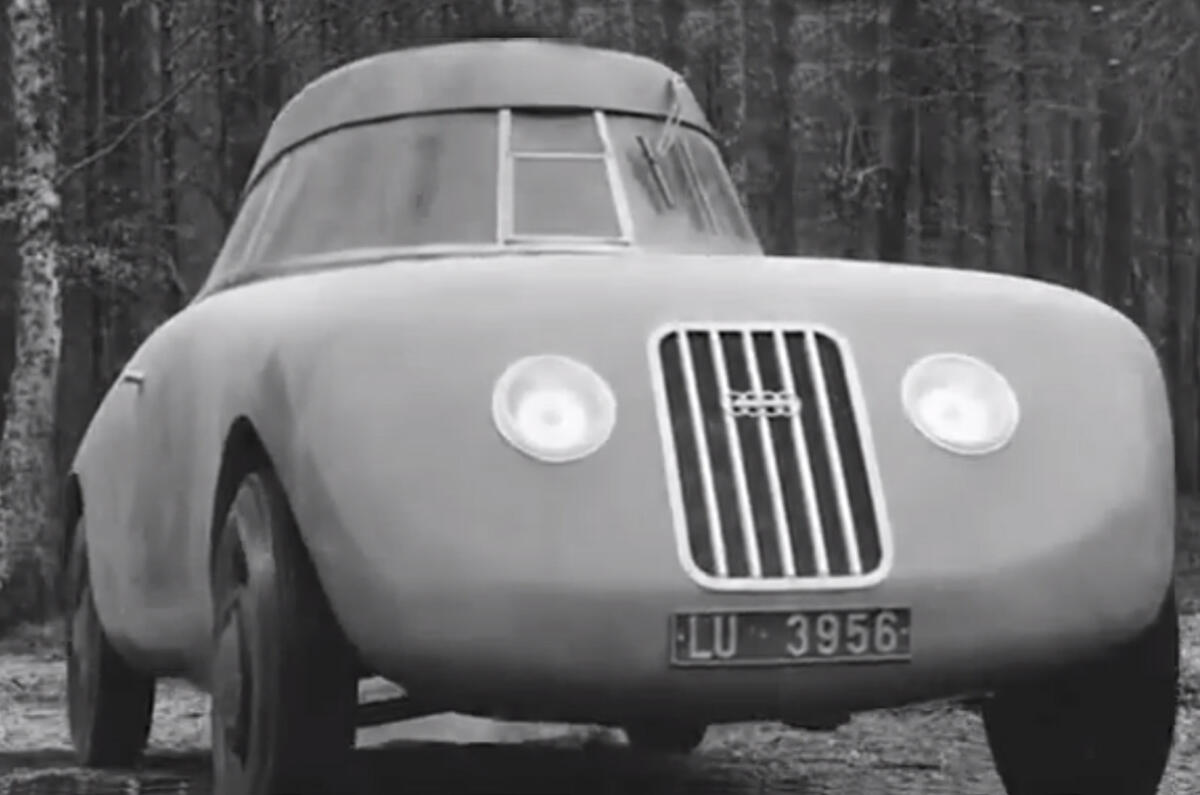Christmas meant consuming more TV advertising than I’m used to. Some of the adverts were good. Others attempted to sell the services of no-win, no-fee lawyers, payday loans, or an operatic car insurance salesman.
It’s easy to love or hate an advert; that’s so often what makes them memorable. The latter, I suspect, is the reason for that opera singer remaining on our screens.
Oddly, the advert that struck me most was also the one which left with the most mixed feelings: the Audi A5.
The story goes thus: weird-looking old car snakes through a wintery wonderland, parks up and turns into an A5. A kind of modern-day, automotive ugly duckling.
My bone of contention is that to my eyes, the ‘ugly’ duckling is nothing of the sort. It appeals directly to my love of engineering and aero-led design. The Auto Union concept ‘duckling’ was penned by Paul Jaray, one of the most significant designers of the era.
He was among the earliest proponents of automotive aerodynamics and streamlining, a look that defined the futuristic look of many cars in the 1920s and 1930s.
He cut his teeth streamlining airships before turning his hand to cars. The Ley T6, Audi K 14.50 and Dixi 6/24hp came in 1923. Jaray’s design raised the Dixi’s top speed from 49 to 62mph purely by fully understanding aerodynamics. Naturally, they never caught on.
Nevertheless, Jaray pushed on. He set up shop in Switzerland licensing his streamlined designs to manufacturers. Tatra used the concept until 1975. Maybach was another car maker to embrace the style and BMW developed a Jaray-penned concept.
But it was Audi with which he is most closely associated. The 1923 Auto Union streamliner concept sadly no longer exists; a faithful replica was built and is the one used in the A5 adverts. Jaray’s influence can also be seen on Auto Union's ‘Silver Arrows’ race cars.
The ’23 streamliner may be many things, but ugly it is not.




Join the debate
Add your comment
Surely the point of 'The Ugly
Surely the point of 'The Ugly Duckling' is that the duckling is not ugly at all and never was, it was considered ugly because it was different, only when it was seen amongst the swans was it known it was actually a beautiful swan. In which case haven't Audi hit the nail right in the head? The streamliner, like many technological advancements are never accepted because they stand out as different, ugly you could say, but as time has developed and aerodynamics has played a more and more important role in car design; in context streamlining has become a beautiful thing, the A5 is the grown up version of the streamliner as they claim and is now a swan amongst swans. (although that could be overplaying it a little for the A5)
I think it's a great Ad.
The '23 Streamliner was as ugly as sin. The Audi A5 is the first really beautiful car Audi have built. Really clever advertising - did it originate in Germany or the UK ? The Germans are not usually noted for their sense of humour.
Agreed
I'm with the author here. The streamliner was clearly ahead of its time, something the A5 is not. The Audi 100's of the mid-eighties might have shared something of the streamliner's smoothness and simplicity; but the A5 is bloated and over-swaged in comparison.
Something of the spirit seems to live on in the VW XL1 though...
When i saw the advert, I really wanted the ugly duckling, not the swan.